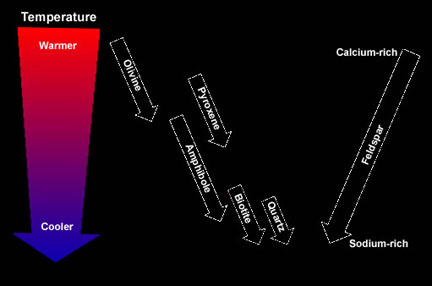This diagram of Bowen's Reaction Series shows how the common silicate minerals crystalize at different temperatures.
Windows Original Image
Bowen's Reaction Series
As magma cools slowly, elements within it become chemically bonded forming crystals of minerals. However, not all minerals form at the same time during the cooling process. Some minerals crystallize when magma is at a higher temperature, while others only crystallize when magma is at a lower temperature. Bowen's Reaction Series describes when the eight most common silicate minerals form during the cooling process.
In the Bowen's Reaction Series diagram to the left, minerals that form at high temperatures are listed at the top and minerals that form at lower temperatures are listed at the bottom.
Rocks that form from magma or lava cooled from high temperatures tend to contain a lot of iron and magnesium but little silica. These rocks are called mafic and tend to be dominated by dark colored minerals such as amphibole and pyroxene.
When magma cools slowly, minerals that form at cooler temperatures dominate the resulting rock. These rocks are called felsic and tend to be light colored with minerals such as feldspar and quartz.
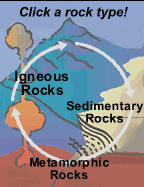
Last modified June 17, 2003 by Lisa Gardiner.
You might also be interested in:
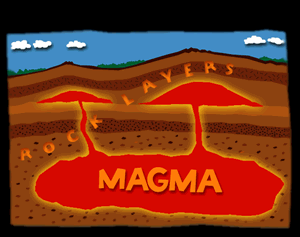
If you could travel to the center of the Earth, you would find that it gets hotter and hotter as you travel deeper. The heat is naturally produced by decay of radioactive elements. Within the Earth’s
...more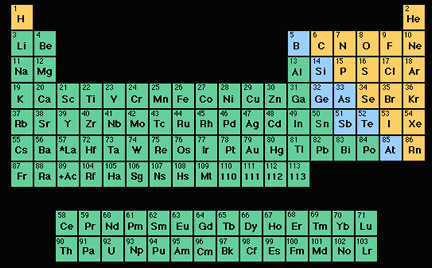
Everything you see around you is made of tiny particles called atoms, but not all atoms are the same. Different combinations of protons , neutrons and electrons make different types of atoms and these
...more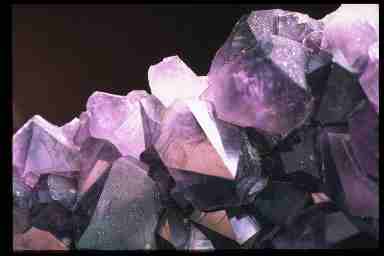
Minerals occur naturally on rocky planets and form the building blocks of rocks. They are non-living, solid, and, like all matter, are made of atoms of elements. There are many different types of minerals
...more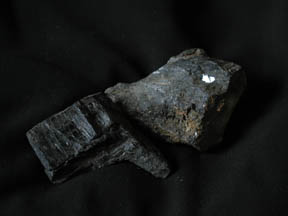
There are several different minerals within the amphibole group, but the most common type is hornblende. You can find small crystals of hornblende in many types of igneous rocks. They often look like little
...more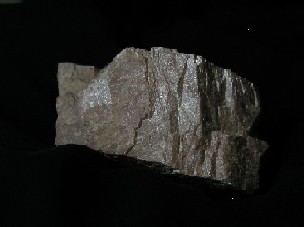
Feldspar is the most common mineral in the Earth’s crust, so you are very likely to find it in the rocks you collect! It is found it all of the three rock types, but is most common in intrusive igneous
...more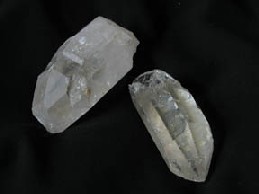
Quartz is the second most common mineral in Earth’s crust. It is a member of the quartz group, which includes less common minerals such as opal, crystobalite, and coesite. Silica (Si) and Oxygen (O) are
...more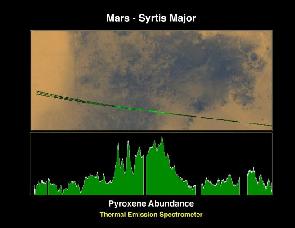
Mars Global Surveyor made a measurement of pyroxene on the surface of Mars. The absence of pyroxene minerals was a puzzlement to scientists studying results returned by the Mars Pathfinder Rover's examination
...more
